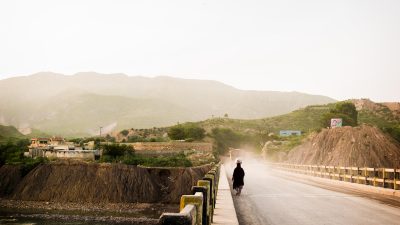A Catastrophic Wake-Up Call For Disaster Preparedness
The 1992 Flores Earthquake and tsunami remain one of Indonesia’s most shocking and destructive natural disasters. Beyond the immediate death toll and damage, the event triggered a series of events that highlighted the region’s vulnerabilities and exposed deep flaws in the country’s disaster preparedness. This blog dives into the full scope of the tragedy, from the overlooked warning signs to the widespread impacts that were felt for years.
1. The Earth Shook: What You Don’t Know About the Indonesia 1992 Flores Earthquake and Tsunami
On December 12, 1992, a massive earthquake struck off the coast of Flores Island in Indonesia, registering 7.8 on the Richter scale. The tremors were followed by a devastating tsunami, which swept across the region, claiming the lives of over 2,500 people. Thousands more were injured, and the destruction left the island reeling.
This was not an isolated event. The region is part of the Ring of Fire, which is known for its frequent seismic activity. But despite the ongoing risk, the scale of this disaster caught the region largely unprepared, highlighting the urgent need for more proactive measures in such areas prone to natural disasters.
2. How the Indonesia 1992 Flores Earthquake and Tsunami Changed Everything: A Disaster Waiting to Happen
Looking back, the 1992 disaster appears to have been an inevitable catastrophe. The Sunda Megathrust fault, where the earthquake originated, is one of the most active fault lines in the world, and Indonesia’s vulnerability to earthquakes and tsunamis was well known. Yet, the country’s disaster response was grossly inadequate.
At the time, early warning systems were almost non-existent, and public awareness of seismic risks was limited. The general lack of preparedness was evident in the slow response and inadequate infrastructure, which worsened the aftermath. This event forced Indonesia to rethink its approach to disaster preparedness, though improvements came too late for many of the victims.
3. The Devastating Indonesia 1992 Flores Earthquake and Tsunami: Could We Have Known It Was Coming?
- Seismic Detection: While ongoing seismic activity was recorded, accurately predicting the time or intensity of an earthquake remains a challenge. Thus, the 1992 Flores earthquake could not have been anticipated with certainty.
- Tsunami Warning Systems: One of the biggest factors contributing to the disaster was Indonesia’s lack of tsunami detection infrastructure. Without a timely warning system in place, many people were unaware of the tsunami’s arrival and had no chance to evacuate.
- Preparedness: The overall level of preparedness in the affected region was inadequate. Local communities had no formal evacuation procedures, and many had little understanding of the risks posed by the earthquake and tsunami. As a result, the disaster’s toll was far greater than it would have been had proper measures been in place.
4. Indonesia 1992 Flores Earthquake and Tsunami: A Disaster That Could Have Been Prevented
In many ways, the devastation caused by the Indonesia 1992 earthquake and tsunami could have been mitigated. While the earthquake itself was an unavoidable event, the loss of life and widespread damage were exacerbated by governmental failures and a lack of disaster management systems.
Had there been adequate infrastructure, including tsunami-resistant buildings and emergency evacuation routes, the toll would have been less severe. The Indonesian government’s slow response and limited preparedness were key factors in why the disaster spiraled out of control.
5. How the Indonesia 1992 Flores Earthquake and Tsunami Exposed the Weaknesses in Indonesia’s Infrastructure
The 1992 Flores earthquake laid bare the shortcomings in Indonesia’s disaster response systems and infrastructure. The lack of tsunami-resistant buildings, inadequate emergency services, and a slow recovery process all contributed to the immense human and financial costs of the disaster.
Coastal areas, which were most vulnerable to the tsunami, were left exposed due to poorly constructed buildings and a lack of contingency plans. Rebuilding efforts took years, and Indonesia’s response highlighted the need for urgent improvements in disaster planning and infrastructure.
6. The Hidden Costs of the Indonesia 1992 Flores Earthquake and Tsunami: Far More Than Just Immediate Damage
The true cost of the 1992 Flores earthquake extended far beyond the immediate death toll and property damage. The economic toll was immense, with $1 billion in damages. But the most devastating long-term costs included the psychological trauma suffered by survivors, many of whom had lost everything.
Communities struggled to rebuild in the wake of the disaster. The loss of homes and livelihoods meant that many people had to start from scratch in a region where the infrastructure and support systems were severely lacking. The social and emotional costs of the disaster lasted far longer than the physical damage.
7. The Indonesia 1992 Flores Earthquake and Tsunami: What the Government Doesn’t Want You to Know
- Delayed Response: In the wake of the disaster, the Indonesian government’s response was slow and disorganised. Many affected areas were left without aid for extended periods as rescue teams struggled to reach the hardest-hit zones.
- Corruption Issues: There were significant concerns about mismanagement of international aid and funds, with accusations of corruption preventing resources from reaching those who needed it most. The failure to distribute relief effectively further prolonged the suffering of survivors.
- Neglect of Vulnerable Areas: The Indonesian government’s failure to prioritise risk mitigation in vulnerable areas meant that towns and villages along the coast were particularly exposed. Lack of infrastructure and poor planning exacerbated the devastation when the tsunami hit.
8. Indonesia 1992 Flores Earthquake and Tsunami: Was it Nature’s Wrath or Human Failure That Led to the Devastation?
While the earthquake and tsunami were undeniably natural events, it’s hard to ignore the role of human failure in the scale of the disaster. Indonesia’s vulnerability to seismic events was well known, yet efforts to strengthen buildings and improve public awareness were insufficient.
The lack of proper urban planning, disaster education, and infrastructure investment were major contributors to the extent of the damage. If the country had been better prepared, many of the lives lost could have been saved. Instead, the region was left exposed to a disaster it was not ready for.
9. The Aftermath of the Indonesia 1992 Flores Earthquake and Tsunami: The Struggles That Followed
The aftermath of the 1992 earthquake and tsunami was catastrophic. Thousands of homes were destroyed, roads were blocked, and entire communities were devastated. The scale of the destruction was unparalleled, and the region was left grappling with the immediate impact while facing a long and painful recovery.
Rebuilding was slow, with limited resources and a lack of coordination between local authorities and international aid groups. Many people were displaced, and the overall recovery process took far longer than anticipated, revealing the inadequacies of the nation’s disaster response.
10. Lessons from the Indonesia 1992 Flores Earthquake and Tsunami: Are We Any More Prepared Today?
The 1992 earthquake and tsunami forced Indonesia to confront its vulnerability and reconsider how it prepares for disasters. Although there have been some improvements in early warning systems and seismic monitoring, the region is still vulnerable to similar events.
The lessons learned from the 1992 disaster highlight the importance of early intervention, public education, and improved infrastructure in mitigating future disaster risks. The progress made is commendable, but the question remains: how much longer will it take before every community is fully prepared for the next disaster?
FAQs
- What caused the Indonesia 1992 Flores Earthquake and tsunami?
- The earthquake occurred along the Sunda Megathrust fault, with the resulting tsunami being caused by the seismic activity.
- How much damage did the Indonesia 1992 Flores Earthquake cause?
- The earthquake caused over 2,500 deaths and significant property damage, with economic losses reaching approximately $1 billion.
- Could the Indonesia 1992 Flores Earthquake have been predicted?
- While seismic activity is continuously monitored, accurately predicting earthquakes remains a challenge, and early tsunami warnings were lacking.
- What were the long-term effects of the Indonesia 1992 Flores Earthquake?
- Long-term impacts included economic disruption, psychological trauma, and slow rebuilding efforts due to poor infrastructure.
- Has Indonesia improved disaster preparedness since the 1992 Flores Earthquake?
- Yes, Indonesia has since improved its seismic monitoring and warning systems, though rural areas still face significant challenges in preparedness.
References:
“1992 Flores earthquake and tsunami”
“Response of Residents at the Moment of Tsunamis—The 1992 Flores Island Earthquake Tsunami, Indonesia”
“Indonesia Earthquake Dec 1992 UN DHA Situation Reports 1–9”




